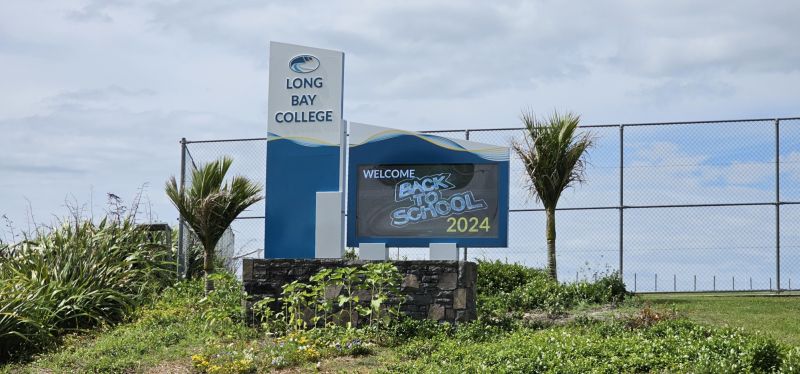
Image supplied by WiPath
<p>Strong home-school partnerships and crucial for ākonga achievement and wellbeing. This is impossible without frequent communication.</p>
<p><a href="https://www.schoolnews.co.nz/latest-print-issue/" target="_blank" rel="noopener"><strong>Read the latest print edition of <em>School News</em> HERE</strong></a></p>
<p>Often, effective communication is a matter of meeting parents and whānau where they are and ensuring you are distributing information via the best means for your community. Digital signage can play an integral role.</p>
<h4><strong>The role of digital signage</strong></h4>
<p>Many schools have digital signage at their entrances. Centrally controlled displays mean digital signage is multipurpose: proclaiming student and staff achievements, communicating important announcements and displaying positive messages. </p>
<p>Advertising school events can also be community building, as parents and family come together to participate in or enjoy sports, arts and cultural events. Digital signage can offer an edge for fundraising projects by increasing awareness of their profile and fundraising goals. </p>
<p>By promoting student achievements, schools can also engender a positive school culture, where success is acknowledged and celebrated by the community. </p>
<p>Many schools have diverse communities. Creating a culture of inclusion and belonging can be modelled at the senior leadership level by displaying multilingual greetings or acknowledging the important holidays and celebrations of different cultures. </p>
<p>In addition to supporting and uplifting the community, digital signage provides other opportunities, such as generating ad revenue. This can open-up sponsorship opportunities for all manner of school activities such as sports games, dances, competitions and more.</p>
<figure id="attachment_31232" aria-describedby="caption-attachment-31232" style="width: 626px" class="wp-caption aligncenter"><img class=" wp-image-31232" src="https://www.schoolnews.co.nz/wp-content/uploads/2024/08/SN66-PROP-Digital-Signage-WiPath-4.jpg" alt="digital signage" width="626" height="417" /><figcaption id="caption-attachment-31232" class="wp-caption-text">Image supplied by WiPath</figcaption></figure>
<h4><strong>Finding the right sign </strong></h4>
<p>Of course, different school communities will have different needs. Some schools would benefit from large dynamic displays whereas other communities may be more receptive of a modest display.</p>
<p>There are a multitude of options available from one end of the spectrum to the other. Benefits and costs of each may be elaborated on by expert installers. They can recommend the most attractive display for a given area and how to maximise efficiency for value. </p>
<p>Simple, low-resolution displays may be a cost-effective way to display simple notices, text or other information like ambient air temperature and date and time. These displays have great cost-benefit advantages as their simple displays can act like a clocktower – both a landmark for the school and conveying simple, crucial information for the school community.</p>
<p>These low-resolution options have surprising versatility. Different colours can be employed to differentiate messages, different language options are often available, and simple graphics can be uploaded. Time and temperature functions provide crucial information and a point of engagement and interaction for the school community. </p>
<p>For schools with a larger budget, a higher resolution display may be the right choice. Although initially higher cost, these displays offer future revenue to offset initial investment. This is because the availability of complex graphics and colours enables advertising opportunities, often in a prime, road-facing position and with a built-in audience. Besides advertising revenue, school-images and short videos can improve school spirit and morale among students and the wider community alike. </p>
<p>Other considerations for schools include the compatibility of centralised software for signage control, displays with multiple screens to capture audiences from all directions, vandalism protection measures, sensors for optimal lighting and corrosion resistance. </p>
<p>Depending on budget, schools can also choose a variety of stand options for an LED display. Digital signs that come in plinth structures can have beautiful school logos to ensure visual cohesiveness and instil school pride. Some companies may provide custom structures to reflect schools’ special characteristics like architecture or natural features.</p>
<h4><strong>From a professional in the field</strong></h4>
<p>Walid Hadi, Managing Director and Chief Engineer at <a href="https://wipathcommunications.com/" target="_blank" rel="noopener">WiPath</a>, said it is important to take into account factors related to size and space when deciding on digital signage. “The location and physical space available, audience distance, traffic regulations and visibility will all influence the size of the screen.</p>
<p>“For a classroom, smaller indoor signs are ideal, while for gymnasiums, outdoor and undercover sports fields, or school halls, a much larger sign is better suited.</p>
<p>For outdoor, it is always recommended to install a large screen and of a 16:9 ratio,” Mr Hadi said. “Pixel Pitch is determined by the content quality and viewing distance. Outdoor LED signs of 3.91mm are the best quality and the highest economical resolution in the NZ market for outdoor LED signs.</p>
<p>“Larger screens are generally more expensive but a valuable investment. Power supply and network connectivity are the two additional factors that will reflect on the cost of the project and need to be considered within the budget.”</p>
<p>Mr Hadi said managing messaging on digital signs is a very easy task. “Most digital signage systems use a Content Management Systems (CMS). This is a web-based cloud platform that allows you to create, schedule, and update content, however it can still be locally controlled by installing an application. The advantage of CMS is centralised control, user-friendly interface, content scheduling, and availability on any web enabled device from any location with an internet connection.”</p>

Teacher guide for the new PAT tuhituhi | writing assessment for Years 5 to 10…
Banning AI won’t cut it, says one science teacher. So how can schools and teachers…
Are stressed teachers contributing to the dysregulation we see in classrooms? Rebecca Thomas asks in…
Henbury School Principal Sarah Corry offers a candid, heartfelt insight into leadership burnout, resilience, and…
For many of us, calling our teachers by their first names would have been unthinkable.…
NZEI Te Riu Roa is considering legal action against the government for the disestablishment of…
This website uses cookies.